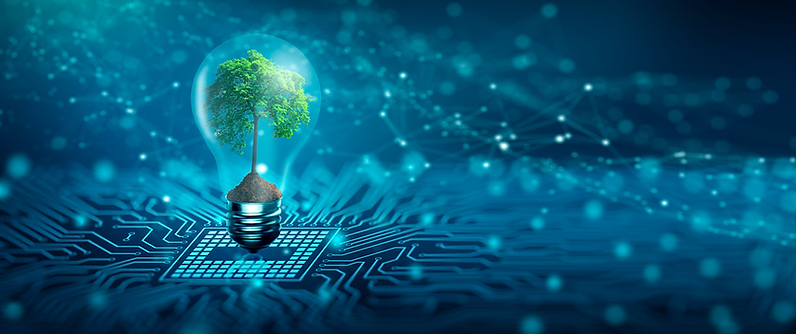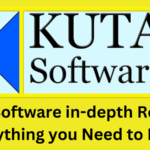In an era defined by swift technological progress and an insatiable appetite for the newest gadgets, the issue of electronic waste (e-waste) has come to the forefront of environmental concerns. The exponential growth of electronic devices, coupled with their relatively short lifespans, has led to a staggering accumulation of discarded gadgets that pose grave environmental and health risks. As the world grapples with finding sustainable solutions, an often-overlooked yet significant contributor to the quest for eco-friendliness lies in the realm of software. This article delves into the concept of eco-friendly computing and how reusing software licenses can be a powerful strategy to mitigate e-waste and promote sustainability in the tech industry.
The Hidden Environmental Costs of Electronics
Electronic devices have transformed our lives, from facilitating communication and entertainment to revolutionizing industries. However, this progress comes at a cost that often goes unseen: e-waste. E-waste encompasses discarded electronic devices, components, and accessories, containing hazardous materials that can contaminate soil, water, and air. These toxic substances, such as lead, mercury, and brominated flame retardants, pose threats to both human health and the environment.
Furthermore, the energy-intensive manufacturing processes and the rapid turnover of electronic devices contribute to carbon emissions and resource depletion. In recent years, the accelerated advancement of technology has resulted in more extended product lifecycles, prompting consumers to frequently upgrade their devices in pursuit of the latest features. This cycle of constant upgrading not only perpetuates the culture of disposability but also exacerbates the environmental toll. The irony lies in the fact that while hardware devices deteriorate and lose functionality over time, the Used software that powers them remains robust and adaptable. This divergence in longevity presents a unique opportunity to reshape our approach to technology consumption.
The disposal of electronic devices is a complex process, often involving methods that are harmful to both human health and the environment. Incinerating e-waste releases beneficial elements into the air, while incorrect landfill disposal can result in the absorption of beneficial chemicals into the soil and groundwater. The adverse consequences of e-waste are felt acutely in developing countries, where rudimentary methods of recycling and disposal put communities at even greater risk.
The Software Paradox: A Solution Within Reach
While the hardware components of electronic devices make up the bulk of e-waste, the software they run on presents an intriguing paradox. Unlike physical components, software does not degrade or wear out over time. It remains functional even as hardware evolves. This disparity between the lifespan of hardware and software creates an opportunity for sustainable action. Reusing software licenses, the permissions that enable users to run software, can extend the life cycle of digital tools and significantly reduce the demand for new software installations.
The Lifecycle of Software Licenses
Software licenses are the legal agreements that dictate how software can be used, distributed, and transferred. They encompass a spectrum of models, including proprietary licenses that restrict usage and open-source licenses that encourage collaboration and modification. When a user no longer needs a particular software or upgrades to a newer version, the license attached to that software can be transferred to another user. This process not only supports sustainable software consumption but also aligns with the circular economy model.
Promoting Sustainability Through Software Reuse
Extended Lifespan: By reusing software licenses, users can continue using software even if they upgrade their hardware. This extends the lifespan of software and reduces the frequency of new installations, minimizing the overall demand for software and its associated resources.
Reduced E-Waste: The longer software remains in use, the fewer instances of hardware upgrades are required. This translates to a decreased need for disposing of old hardware, thereby contributing to a reduction in e-waste generation.
Resource Conservation: Software reuse conserves the energy and resources that would have been expended in manufacturing new devices to accommodate new software installations.
Lower Carbon Footprint: The energy consumption associated with manufacturing and distributing new hardware is substantial. By reusing software, users indirectly contribute to lowering the carbon footprint associated with the tech industry.
Best Practices for Embracing Eco-Friendly Software Usage
Mindful Upgrades: Before upgrading hardware, consider whether the existing software licenses can be transferred to the new device. This step reduces the pressure to obtain new software licenses for each upgrade.
Transferability: When purchasing software licenses, prioritize those with transferable rights. This allows you to pass on the license to another user when you no longer need it.
Support Sustainable Brands: Choose software vendors that emphasize software reuse, offer transferable licenses, or advocate for sustainable software practices.
Awareness and Advocacy: Raise awareness about the environmental benefits of software reuse among your peers, colleagues, and online communities. Encouraging others to adopt eco-friendly software practices amplifies the positive impact.
In Conclusion
Eco-friendly computing is more than a buzzword; it’s a movement towards responsible and sustainable technology consumption. Reusing software licenses stands as an accessible and impactful strategy within this movement. By embracing software exercise, we can effectively attack the challenge ofe-waste, minimize resource reduction, and contribute to the preservation of our terrain. As consumers, businesses, and technology suckers, we hold the power to shape a future where our digital inventions attend harmoniously with the earth. Embracingeco-friendly computing through software exercise isn’t just a choice; it’s a commitment to a greener, more sustainable world.








